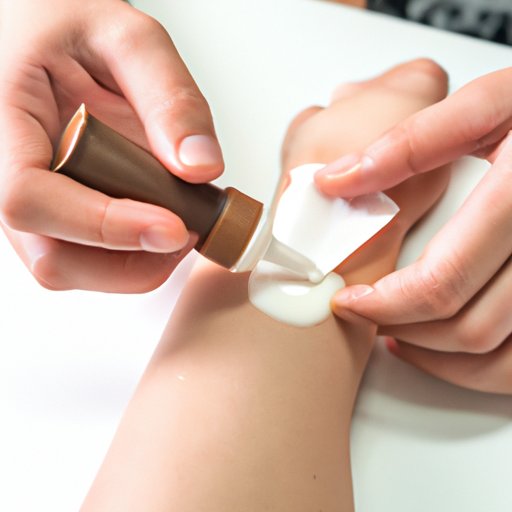
Introduction
One of the most common injuries that people encounter is a wound. A wound is an open injury that requires proper attention and care to prevent infection. Unfortunately, even with proper care, wounds can still become infected, leading to further complications and delays in the healing process. Infected wounds pose a serious threat to the health of individuals, especially for those who suffer from chronic conditions. Knowing how to properly treat an infected wound is essential to prevent the infection from worsening and spreading.
Dos of Treating an Infected Wound
Following certain guidelines can help you effectively treat an infected wound:
Clean the Wound Properly
The first step in treating an infected wound is to clean it properly. Clean the wound with cool running water and mild soap to remove any dirt or debris. Use a soft cloth or gauze to gently clean the area around the wound. Be sure to remove all dirt and debris to prevent bacteria from entering the wound.
Cover the Wound with a Sterile Bandage
Covering the wound with a sterile bandage keeps the wound clean and protects it from further contamination. Cover the wound with sterile gauze or bandage, securing it with a medical tape. Change the bandage daily or more frequently if the wound bleeds or oozes pus or other drainage.
Apply Topical Antibiotic Ointment
Applying an antibiotic ointment can reduce the risk of infection and promote healing. You can apply over-the-counter antibacterial ointment, such as Neosporin, or follow the instructions provided by your healthcare provider. Apply a thin layer of antibiotic ointment and cover the wound with a sterile bandage.
Keep the Wound Dry and Clean
Keep the wound dry and clean by avoiding direct contact with water. Avoid soaking the wound in water and refrain from swimming or immersing it in any water-based activity. Keep the wound protected from dirt and debris, and replace the dressing if it gets wet or dirty.
Monitor for Signs of Worsening Infection
Monitor the wound for any signs of worsening infection, such as increased pain, redness, swelling, or warmth around the wound. If the wound begins to ooze yellow or green-colored pus, consult your healthcare provider immediately as this is often a sign of severe infection.
Seek Medical Attention if Needed
If the wound does not show any improvement after several days of home care, consult your healthcare provider to prevent further complications. Seek immediate medical attention if you experience any signs of severe infection, such as fever, chills, or spreading redness beyond the wound site.
Don’ts of Treating an Infected Wound
There are several things you should avoid doing while treating an infected wound:
Do Not Use Hydrogen Peroxide or Other Irritating Substances
Avoid using hydrogen peroxide or other irritating substances to clean the wound as it can damage healthy tissues and delay the healing process.
Do Not Pick or Scratch at the Wound
Avoid picking or scratching at the wound, as it can cause further damage and increase the risk of infection. Let the wound heal naturally and avoid touching it with dirty hands.
Do Not Cover the Wound With an Adhesive Bandage if There is Drainage or Pus
Avoid covering the wound with an adhesive bandage if there is drainage or pus, as it can trap bacteria and delay the healing process. Instead, use sterile gauze or a non-adhesive dressing to cover the wound.
Do Not Ignore Signs of Infection
Ignorance of the signs of infection can lead to further complications and permanent damage. Keep a close eye on the wound and follow the recommended precautions to prevent the infection from worsening.
Home Remedies for Treating an Infected Wound
Natural remedies may help to reduce the risk of infection and promote healing:
Using Honey
Honey has natural antimicrobial properties that can help to reduce the risk of infection. Apply a small amount of honey to the wound and cover it with sterile gauze.
Using Tea Tree Oil
Tea tree oil has natural antibacterial and antiseptic agents that can help prevent infection. Dilute tea tree oil with a carrier oil, such as coconut oil, before applying it to the wound.
Using Aloe Vera Gel
Aloe vera gel has anti-inflammatory and antimicrobial properties that can help to soothe the wound and reduce the risk of infection. Apply a thin layer of aloe vera gel to the wound and cover it with sterile gauze.
When to Seek Medical Attention for an Infected Wound
It is important to seek medical attention if any of the following occurs:
Infection Spreads or Worsens
If the signs of infection worsen or spread beyond the wound area, consult your healthcare provider immediately.
Development of Pus or Fluids
If the wound develops pus or other fluid, consult your healthcare provider as soon as possible.
Fever or Chills
If you experience fever, chills, or other flu-like symptoms, it may be a sign that the infection has spread and requires medical attention.
Diabetes or Chronic Conditions
If you have diabetes or any other chronic condition, consult your healthcare provider immediately, as the risk of infection is higher.
Conclusion
Proper care and treatment of an infected wound are essential to prevent further complications and promote healing. Remember to clean the wound properly, cover it with a sterile bandage, apply a topical antibiotic ointment, and keep it dry and clean. Avoid using hydrogen peroxide or other irritating substances to clean the wound. If the wound fails to improve or gets worse after several days, seek medical attention immediately. Follow the recommended precautions and natural remedies to reduce the risk of infection and promote healing.





